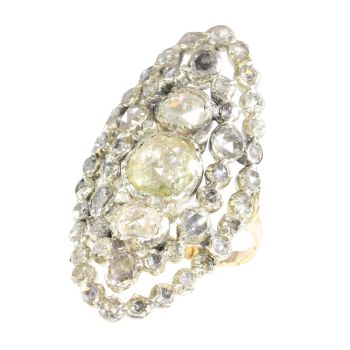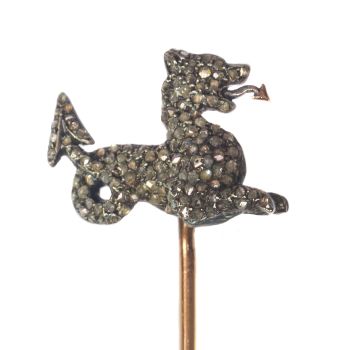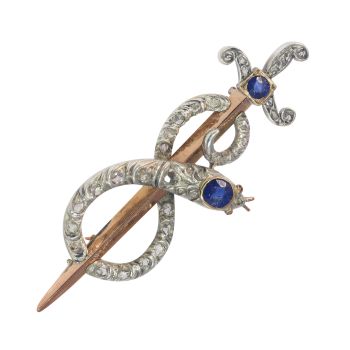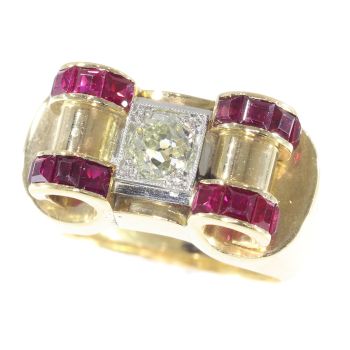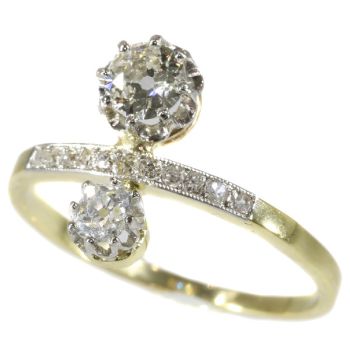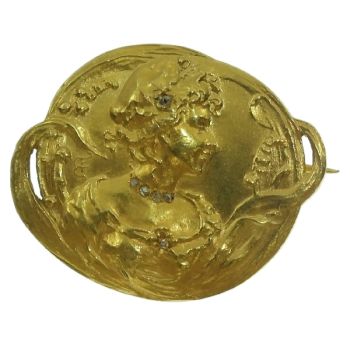Vintage antique 18K gold bracelet with white enamel (attributed to the legendary French designer Luc 1890
Leopold Gautrait
Adin Fine Antique Jewellery
- A proposito di opere d'arte
Antique jewelry object group
bracelet
Condition
very good condition
more info on our condition scale
Country of origin
Although it does not carry any legible control marks we believe this to be of French origin.
Style
Victorian - Victorian decorative arts refers to the style of decorative arts during the Victorian era. The Victorian era is known for its eclectic revival and interpretation of historic styles and the introduction of cross-cultural influences from themiddle east and Asia in furniture, fittings, and Interior decoration. Victorian design is widely viewed as having indulged in a regrettable excess of ornament. The Arts and Crafts movement, the aesthetic movement, Anglo-Japanese style, and Art Nouveaustyle have their beginnings in the late Victorian era.
See also: Victorian
more info on styles
Style specifics
The Late or Aesthetic Victorian Period - Experts divide the reign of Queen Victoria, also called The Victorian era (1837-1901) into three periods of about twenty years each; The Romantic Victorian Period (1837 - 1860), The Grand Victorian Period(1860 - 1880), and the Late or Aesthetic Victorian Period (1880 - 1901).
We consider this to be of The Late or Aesthetic Victorian Period.
Jewelry of this period is changing back from heavy to more smaller, romantic pieces with often whimsical motifs. Jewelers using diamonds and bright gemstones in elaborated and fine feminine pieces.
Period
ca. 1890
Events & facts of this era, poetry of this era, fashion of this era.
Material
18K yellow gold (touchstone tested)
more info on precious metals
Technique
Enamelling is an old and widely-adopted technology. The ancient Egyptians applied enamels to pottery and stone objects. The ancient Greeks, Celts, Russians, and Chinese also used enameling processes on metal objects. Enamel is the colorful result offusing powdered glass to a substrate by firing, usually between 750 and 850 degrees Celsius. The powder melts and flows and hardens to a smooth, durable vitreous coating on metal, glass or ceramic. According to some sources, the word enamel comes fromthe High German word smelzan (to smelt) via the Old French esmail. Used as a noun, "an enamel" is a usually small decorative object, coated with enamel coating, such as a champlevé or a cloisonné (different techniques).
Extra information
This bracelet is attributed to the legendary French designer Lucien Gautrait - similar bracelets by him are known. The clasp where the hallmarks should be seems to be repaired/replaced in its past.
More background information on Lucien (or Léopold) Gautrait
Parisian artist and jewelry designer Lucien or Léopold Gautrait (1865-1937), is known to have worked for theleading jewellery firms of Henri Vever, Boucheron and Léon Gariod in Paris. The known pieces by Gautrait are mainly pendants, brooches and bracelets and often take inspiration from Lalique techniques. However, hiscompositions have a distinctive ornamental character and show a preference for swung contours into which functional pieces, such as loops and fastenings, are fitted. Gautrait was highly skilled at creating birdpieces, specifically peacocks, with lush, densely colored and glittering plumage made with enamel. The effect of finely chased gold and enamels is most obvious, while precious stones provide discreet accents.
Work attributed to Gautrait is also notable for the finely sculpted female faces and exceptional luminous enamel work. Aside from the scattering of pieces that can be positively attributed to Gautrait,little else is known about the man or his work. Some of his pieces can be found in the Victoria & Albert Museum (London), Fitzwilliam Museum (Cambridge), Bavarian National Museum (Munich), Schmuckmuseum (Pforzheim) and others.
Hallmarks
No trace.
more info on hallmarks
Dimensions
length 18,00 cm (7,09 inch), width 1,65 cm (0,65 inch)
see picture with a ruler in millimeters and inches
Weight
32,00 gram (20,58 dwt)
Adin Reference Nº
23086-0159
Copyright photography
Adin, fine antique jewellery
Additional information
our latest acquisitions
jewelry glossary
wall of fame
visit us in Antwerp
subscribe to our mailinglist
- A proposito di opere artistaLucien o Léopold Gautrait (1865-1937), è noto per aver lavorato per le principali aziende di gioielleria di Henri Vever, Boucheron e Léon Gariod a Parigi. I pezzi conosciuti di Gautrait sono principalmente ciondoli e spille e spesso si ispirano alle tecniche di Lalique. Tuttavia, le sue composizioni hanno un carattere ornamentale distintivo e mostrano una preferenza per i contorni oscillanti in cui sono inseriti pezzi funzionali, come passanti e chiusure. Gautrait era molto abile nel creare pezzi di uccelli, in particolare pavoni, con piumaggio lussureggiante, densamente colorato e scintillante realizzato con smalto. L'effetto dell'oro finemente cesellato e degli smalti è più evidente, mentre le pietre preziose forniscono accenti discreti. L'opera attribuita a Gautrait si distingue anche per i volti femminili finemente scolpiti e l'eccezionale smalto luminoso. A parte la dispersione di pezzi che possono essere positivamente attribuiti a Gautrait, poco altro si sa dell'uomo o della sua opera. Alcuni dei suoi pezzi si trovano al Victoria & Albert Museum (Londra), Fitzwilliam Museum (Cambridge), Bavarian National Museum (Monaco), Schmuckmuseum (Pforzheim) e altri.
Sei interessato ad acquistare questa opera d'arte?
Artwork details
Related artworks
- 1 - 4 / 24
Artista Sconosciuto
Braccialetto di diamanti del XVIII secolo con intagli di 2000 anni1790
€ 23.000Adin Fine Antique Jewellery
 A cura di
A cura diDanny Bree
1 - 4 / 24- 1 - 4 / 24
- 1 - 4 / 12
















